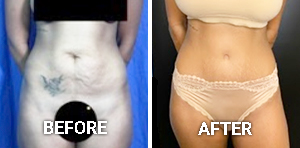Sleep Apnea
Conveniently located to serve the areas of Beverly Hills and Greater Los Angeles

Therapy for Snoring and Sleep Apnea
Do you snore loudly? Do you suffer from insomnia or restless sleep? Do you wake up with headaches and feel exhausted throughout the day? Then chances are, you have obstructive sleep apnea.
Contents
What is Sleep Apnea?
Sleep apnea is a common sleep disorder that involves the interruption of breathing during sleep. Loud snoring is the most recognizable symptom of this condition, but it is not the most serious one. Because individuals with untreated sleep apnea repeatedly stop breathing during sleep, their bodies may not get enough oxygen. As a result, sleep apnea patients may experience frequent headaches, insomnia, and daytime sleepiness.
Risk Factors and Symptoms of Sleep Apnea
While sleep apnea can affect anyone, its risk factors include:
- Being male
- Excess weight
- Being over the age of 40
- Having a family history of sleep apnea
- Having a thick neck circumference and a narrowed airway
- Smoking, use of sedatives, and opioid medications
- Having large tonsils, a small jaw bone, or a large tongue
You might have sleep apnea if you snore loudly or experience fatigue after a full night’s sleep. Other characteristic symptoms include:
- Insomnia
- Restless sleep
- Morning headaches
- Daytime sleepiness
- Gasping for air during sleep
- Waking up with a dry mouth
- Irritability and mood changes
Sleep apnea should be taken seriously because, if left untreated, it can result in such complications as high blood pressure, diabetes, and stroke.
Treatments
Laser reduction of excessive tissue UPPP (Uveolopalatopharyngoplasty)
The UPPP procedure is designed to reduce excessive tissue in the throat area. Dr. Omidi will assess you and determine if you are a candidate for this procedure. Dr. Omidi often employs fractionated CO2 laser to reduce the tissues making this procedure safer with much faster recovery.
Sleep Apnea Appliances
You can breathe freely again! Safe and effective, oral appliance therapy is the golden standard for the treatment of obstructive sleep apnea. Approved by the FDA, this device allows you to eliminate heavy snoring and treat daytime sleepiness without costly surgery. When you sleep, your airway passage may become temporarily blocked due to the pressure from your jaw, causing you to stop breathing and gasp for air. Oral appliance therapy works by moving your lower jaw forward to open up the airway while you sleep. This comfortable device not only reduces loud snoring but also addresses insomnia and other sleep-related problems. Learn more about oral appliance therapy to find out whether it is right for you and enjoy restful sleep.
Restrictions and Risks
Oral appliance therapy is intended to treat mild to moderate sleep apnea. Sleep apnea appliances should not be used by patients under the age of 18. Oral appliance for sleep apnea may pose the following risks:
- Discomfort, especially in the morning
- Buildup of saliva in the mouth
- Damage to teeth and soft tissues (this risk can be averted through a proper placement of customized appliances that fit the patient’s mouth)
- TMJ –Temporomandibular Joint Pain or Irritaiton
- Malpositioning of teeth
Consultation
Scheduling a consultation is a crucial first step in treating sleep apnea and improving the quality of your sleep.
- A consultation allows Dr. Michael Omidi to carefully assess your needs and discuss your desired results.
- He will spend as much time as necessary to determine if this treatment is right for you.
- Omidi will make sure that you have realistic expectations for oral appliance therapy.
- Omidi will provide detailed recommendations concerning the postoperative care.





